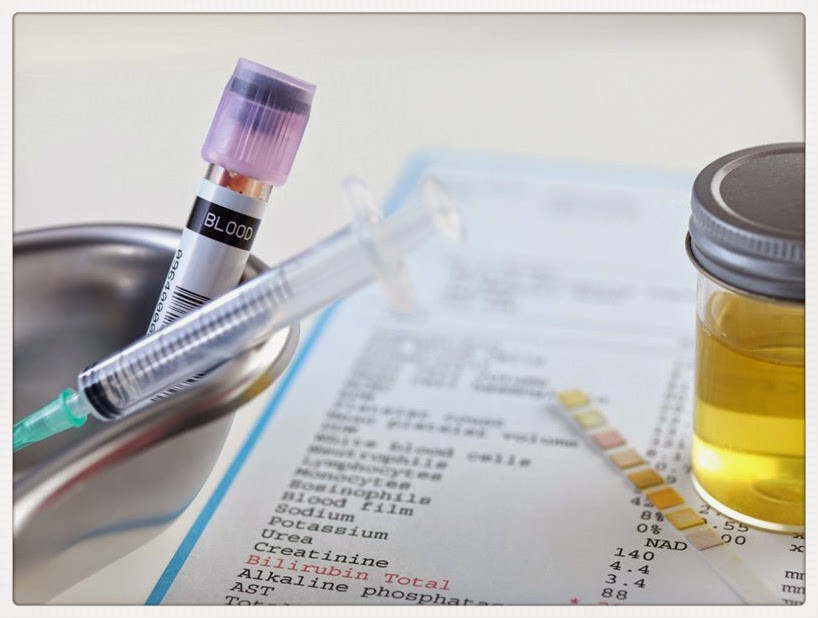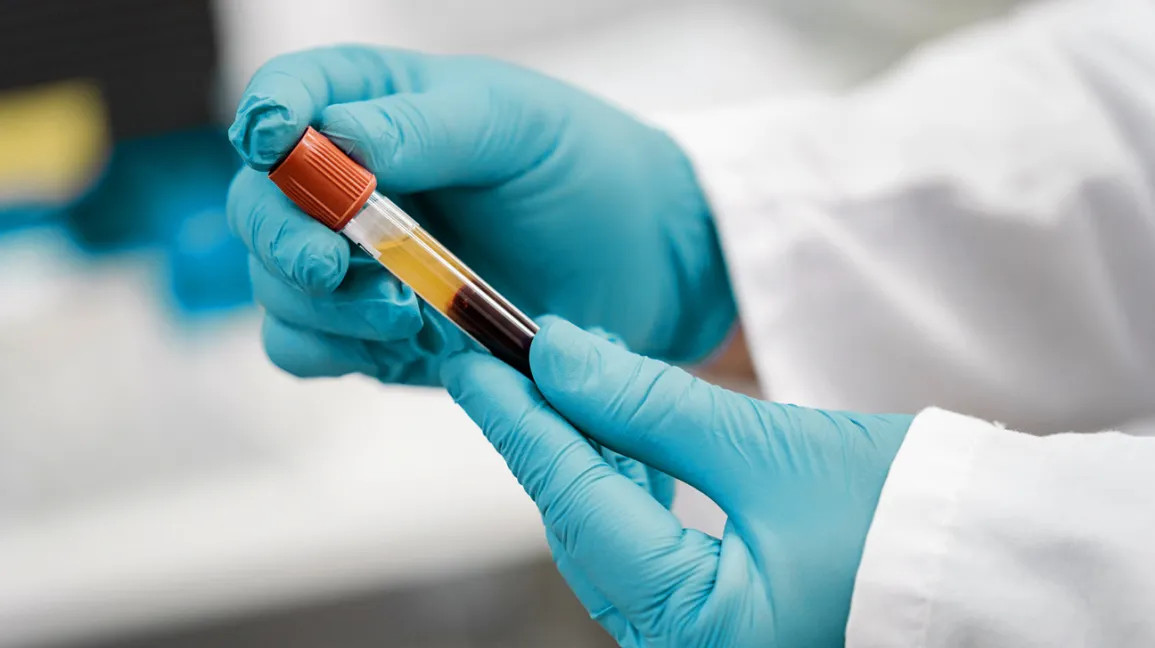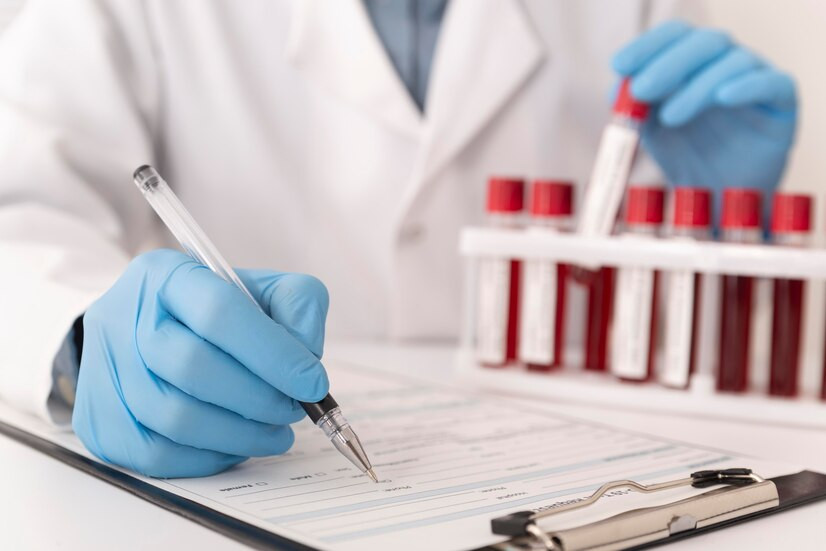Definisi
Pemeriksaan urine Esbach merupakan salah satu pemeriksaan biokimia yang digunakan untuk mendeteksi adanya protein pada air seni seperti albumin ketika bercampur dengan asam sitrat dan asam pikrat. Albumin adalah salah satu protein yang dihasilkan di hati. Albumin berfungsi dalam membawa hormon, vitamin, enzim, dan komponen penting lainnya di dalam pembuluh darah ke seluruh tubuh. Selain itu, Albumin berfungsi dalam mencegah kebocoran cairan keluar dari pembuluh darah dan membentuk paru-paru, perut atau bagian tubuh lainnya.
Pemeriksaan urine Esbach memiliki fungsi penentuan albumin kualitatif dan kuantitatif. Pemeriksaan ini pertama kali ditemukan oleh Georges Hubert Esbach pada tahun 1874 sebagai salah satu usaha menentukan jumlah kuantitaif albumin dalam urine. Prinsip dasar pemeriksaan ini adalah adanya pembentukan endapan ketika air seni bercampur dengan reagen atau pereaksi yang mengandung asam sitrat dan asam pikrat.
Pemeriksaan urine Esbach sendiri tidak seakurat pemeriksaan dengan metode endapan albumin lainnya, dengan pemeriksaan albumin kurang dari setengah gram atau lebih dari 12 gram per 1000 ml sampel urine tidak dapat di deteksi dengan metode ini.
Indikasi
Pemeriksaan albumin di lakukan bila anda mengalami gejala yang memengaruhi kinerja organ hati atau ginjal. Pemeriksaan albumin sendiri tidak dapat dijadikan acuan dalam penentuan diagnosis kondisi organ hati atau ginjal Anda, tetapi dapat membantu dokter dalam mendapatkan informasi penting. Gejala yang memungkinkan adanya gangguan pada organ hati dan ginjal, seperti :
- Kulit kekuningan (jaundice)
- Rasa lelah berlebihan
- Kehilangan berat badan
- Muntah dan diare
- Demam
- Urine kuning pekat atau keruh, feses berwarna pucat
- Nyeri dibagian bawah tulang rusuk kanan, termasuk bagian perut
Bila Anda tidak memiliki permasalahan pada organ hati atau ginjal, pemeriksaan ini tidak direkomendasikan untuk berdiri sendiri. Umumnya, dokter akan menyarankan melakukan pemeriksaan ini saat medical check up. Pada pengujian ini, tingkat albumin dapat di interpretasikan terkait pada pengukuran lainnya.
Kontraindikasi
Tidak ada kontraindikasi khusus terkait pemeriksaan Pemeriksaan Urine Esbach.
Persiapan sebelum Pemeriksaan
Pemeriksaan urine Esbach tidak membutuhkan persiapan khusus. Bila Anda menjalani pemeriksaan lain, maka Anda akan diminta untuk berpuasa (tidak makan) beberapa jam sebelum pemeriksaan dilakukan. Beberapa obat dapat memengaruhi hasil pemeriksaan, sehingga sebaiknya Anda memberikan informasi pada dokter mengenai kondisi medis dan obat-obatan yang rutin dikonsumsi.
Prosedur Pemeriksaan
Pemeriksaan urine Esbach menggunakan sampel urine sehingga Anda akan diminta untuk mengoleksi sampel urine selama 24 jam (disebut juga pemeriksaan sampel 24 jam). Anda akan diberikan wadah khusus untuk menyimpan urine dan instruksi bagaimana mengambil serta menyimpan sampel Anda.
Beberapa langkah dalam mengoleksi sampel urine:
- Pada hari pertama, buang air kecil seperti biasanya dan tidak perlu menampung sampel urine tersebut. Catat jam Anda pertama kali buang air kecil di pagi hari
- Untuk 24 jam berikutnya, koleksi sampel urine Anda di dalam wadah khusus. Selama periode tersebut, simpan sampel urine di dalam kondisi dingin (menggunakan cooler atau cool box dengan es batu)
- Pada hari kedua, simpan urine di pagi hari ketika Anda baru bangun
- Kembalikan wadah sampel beserta sampel urine Anda pada laboratorium pemeriksaan
- Pada bayi baru lahir, bersihkan area urine akan keluar dari tubuh.
- Buka kantong wadah urin (kantong tas dengan kertas perekat diujung)
- Untuk laki-laki, masukkan seluruh penis ke dalam kantong tas dan tempelkan perekat pada kulit
- Untuk perempuan, letakkan kantong di bawah labia
- Pasang pampers seperti biasanya.
- Pada bayi yang aktif, sampel urine dapat berpindah ke pampers sehingga perlu kantong lebih dalam mengoleksi sampel urine
Selanjutnya, segera serahkan sampel urine ke laboratorium untuk dilakukan pemeriksaan lebih lanjut.
Pemeriksaan urine Esbach yang dilakukan dengan cara:
- Pemeriksaan kualitatif
-
- 3 ml reagen Esbach diambil ke dalam tabung pemeriksaan
- Tambahkan 2 ml urine yang telah disaring perlahan tetes hingga tetes
- Amati tabung pemeriksaan untuk memeriksa adanya endapan
- Pemeriksaan kuantitaif
-
- Menggunakan sampel urine yang telah disaring untuk menghilangkan adanya partikel lain
- Bila air seni kurang suasana asam, tambahkan beberapa tetes asam asetat 10%
- Urine yang telah disiapkan ditambahkan dalam tabung albuminometer hingga tanda batas
- Tambahkan reagen ke dalam tabung hingga tanda batas tertentu
- Tutup tabung dengan penutup karet dan campurkan dengan perlahan
- Diamkan sampel dalam tabung dengan posisi tegak selama 24 jam. Setelah itu, baca penandaan pada tabung
Nilai Normal dan Abnormal
Nilai normal pemeriksaan urine Esbach kualitatif berupa hasil negatif, artinya tidak ada pembentukan endapan atau tidak ada endapan kuning. Nilai abnormal pemeriksaan urine Esbach kualitatif berupa hasil positif dengan terbentuknya endapan kuning segera setelah sampel urine dan reagen bercampur satu dengan yang lain.
Pada pemeriksaan kuantitaif, nilai normal bila nilai pemeriksaan <150 mg/24 jam dan abnormal bila nilai pemeriksaan >150 mg/ 24 jam.
Hasil dan saran (pemeriksaan lanjutan)
Negatif
Bila hasil pemeriksaan urine Esbach negatif dan nilai pemeriksaan <150 mg/24 jam menunjukkan organ hati dan ginjal Anda dalam kondisi baik. Pertahankan kesehatan Anda dengan mengonsumsi gizi yang seimbang, aktivitas fisik yang cukup, serta pemeriksaan kesehatan yang rutin.
Positif
Bila hasil pemeriksaan urine Esbach positif dan nilai pemeriksaan >150 mg/24 jam menunjukkan adanya albumin dalam urine. Hal ini mungkin dapat disebabkan oleh kondisi dehidrasi atau Anda sedang menjalankan diet tinggi protein. Minum terlalu banyak air (keracunan air atau water intoxication) juga dapat menyebabkan hasil albumin yang tidak normal.
Konsultasikan ke Dokter yang Tepat
Bila hasil pemeriksaan urine Esbach Anda tidak normal, Anda dapat berkonsultasi dengan dokter umum untuk mendapatkan diagnosis dan terapi yang sesuai. Bila diperlukan, Anda juga dapat berkonsultasi dengan dokter spesialis penyakit dalam terkait kondisi Anda. Pada pasien anak-anak, dokter spesialis anak dapat memberikan informasi dan terapi yang lebih detail.
Mau tahu informasi seputar hasil pemeriksaan laboratorium, radiologi, dan lainnya? Cek di sini, ya!
- dr. Monica Salim
Albumin Blood Test. (2022). Retrived 10 January 2023, from https://medlineplus.gov/lab-tests/albumin-blood-test/
Albumin. (2022). Retrived 10 January 2023, from https://www.urmc.rochester.edu/encyclopedia/content.aspx?contenttypeid=167&contentid=albumin_blood
Albumin Blood Test. (2021). Retrived 10 January 2023, from https://www.testing.com/tests/albumin/
Albumin Blood (Serum) Test. (2019). Retrived 10 January 2023, from https://www.ucsfhealth.org/medical-tests/albumin-blood-(serum)-test
Esbach Test. (2022). Retrieved 10 January 2023, from https://microbenotes.com/esbach-test/











